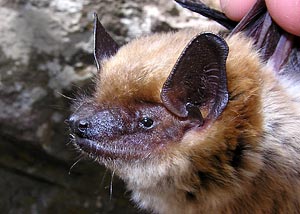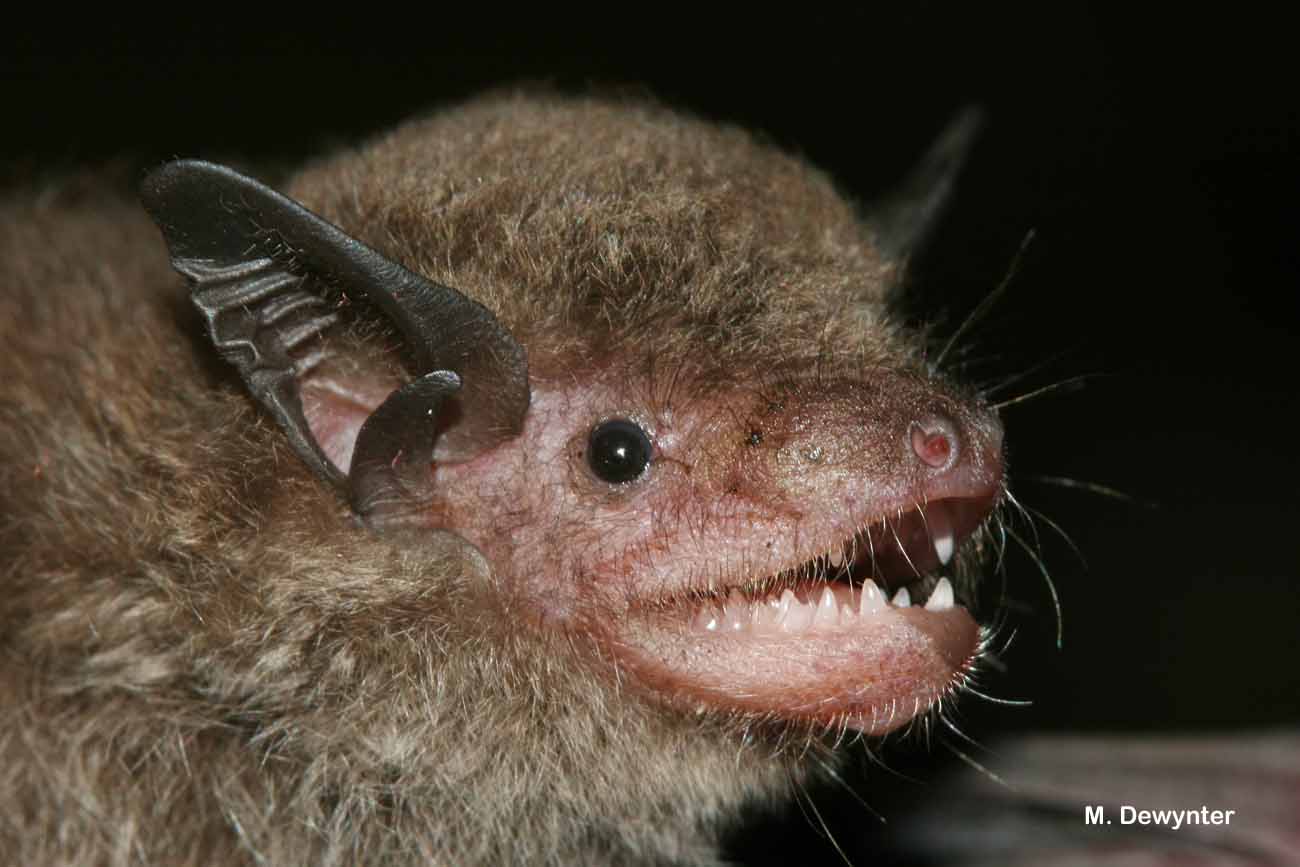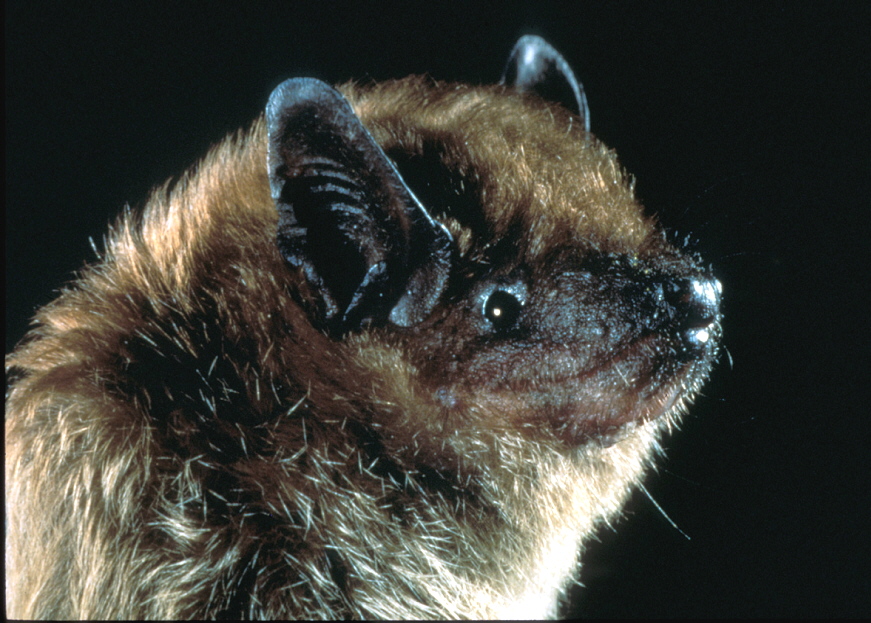Eptesicus
Serotine ( Eptesicus serotinus )
The broad wings of bats ( Eptesicus ) are a bat genus of the family of Myotis bats ( Vespertilionidae ). The genus includes about 30 species that are distributed almost worldwide, of which two living species ( Actual ) Serotine and the Northern bat in Europe.
Description
Their name from the animals to the often broad, rounded wings. They reach a body length of 35 to 75 millimeters, a tail length of 34-60 mm and a weight of 8 to 35 grams. Their fur is dark brown or black on the top, the underside is lighter.
Way of life
These bats are found in a variety of habitats, but some species are likely to prefer forests. They are mainly nocturnal, and spend the day often in smaller groups than other bats. As a place to sleep, they often serve tree hollows, caves or buildings. Your flight is considered to be rather slow, they move it closer to the ground than other bat species. Most species are very site- faithful species in colder regions they hibernate. The food of the broad wings of bats consists mostly of insects.
Reproduction
Females often form nursery roosts, where they separated from the males give birth and raise the boys. The one or two pups come with living in temperate species in the spring or summer to the world, the pairing takes place but often in the fall or winter, the seed of the male is then stored in the reproductive tract of the female. Like many other bats, they are durable, some animals are more than ten years old, in some cases even 20 years are possible.
The types
We distinguish about 32 species that are divided into four subgenera, Eptesicus, Rhinopterus, Neoromicia and Vespadelus. In some classifications the subgenera Neoromicia and Vespadelus the Common Pipistrelle ( Pipistrellus ) are, however, slammed.
Subgenus Eptesicus
- The Bobrinskois bat ( Eptesicus bobrinskoi ) is native of Kazakhstan to Iran.
- The Botta's bat ( Eptesicus bottae ) is spread from Turkey and Egypt to Central Asia.
- The Brazilian Serotine ( Eptesicus brasiliensis ) lives in Central and South America.
- Eptesicus demissus occurs only in Thailand.
- Eptesicus diminutus is native to South America.
- Eptesicus furinalis is distributed from Mexico to Argentina.
- The Big Brown Bat ( Eptesicus fuscus ) is distributed from southern Canada to northern Brazil.
- The Guadeloupe - bat ( Eptesicus guadeloupensis ) is endemic to the Caribbean island of Guadeloupe. The species is considered threatened.
- Eptesicus hottentotus lives in eastern and southern Africa.
- Eptesicus innoxius inhabited the Pacific coast of Ecuador and Peru. The IUCN lists the species as endangered.
- Eptesicus kobayashii is endemic in Korea.
- Eptesicus nasutus comes from the Arabian peninsula to Pakistan and Afghanistan. The species is considered endangered.
- The northern bat ( Eptesicus nilssonii ) is distributed from northern and central Europe to Japan and Tibet.
- Eptesicus pachyotis comes from northeast India to Thailand before.
- Eptesicus platyops lives in the western and central Africa.
- The ( Actual ) Serotine ( Eptesicus serotinus ) is spread from Western Europe to Korea and Thailand, and northern Africa.
- Eptesicus tatei is located exclusively in the Darjeeling region in Northeast India.
Subgenus Rhinopterus
- Eptesicus floweri is known from Mali and Sudan. Arms, legs and tail of this type are covered with small horn plates. It is considered endangered.
Subgenus Neoromicia
- Eptesicus brunneus is spread from Liberia to the Democratic Republic of Congo.
- Eptesicus capensis lives in sub-Saharan Africa.
- Eptesicus flavescens is known only from Angola and Burundi.
- Eptesicus guineensis is distributed from Senegal to the Democratic Republic of Congo.
- Eptesicus melckorum lives in southern Africa.
- Eptesicus during alli inhabited large parts of Africa south of the Sahara.
- Eptesicus somalicus is native to central and southern Africa.
- Eptesicus tenuipinnis is distributed from Senegal to Angola and Ethiopia.
Subgenus Vespadelus
- Eptesicus baverstocki is located in central and southern Australia.
- Eptesicus douglasorum inhabited northern Western Australia.
- Eptesicus pumilus lives in northern, central and eastern Australia.
- Eptesicus regulus inhabited large parts of southern Australia.
- Eptesicus sagittula lives in southeastern Australia, in Tasmania and Lord Howe Island. She was originally the only mammal on this island.
- Eptesicus Vulturnus is native to southeastern Australia and Tasmania.










